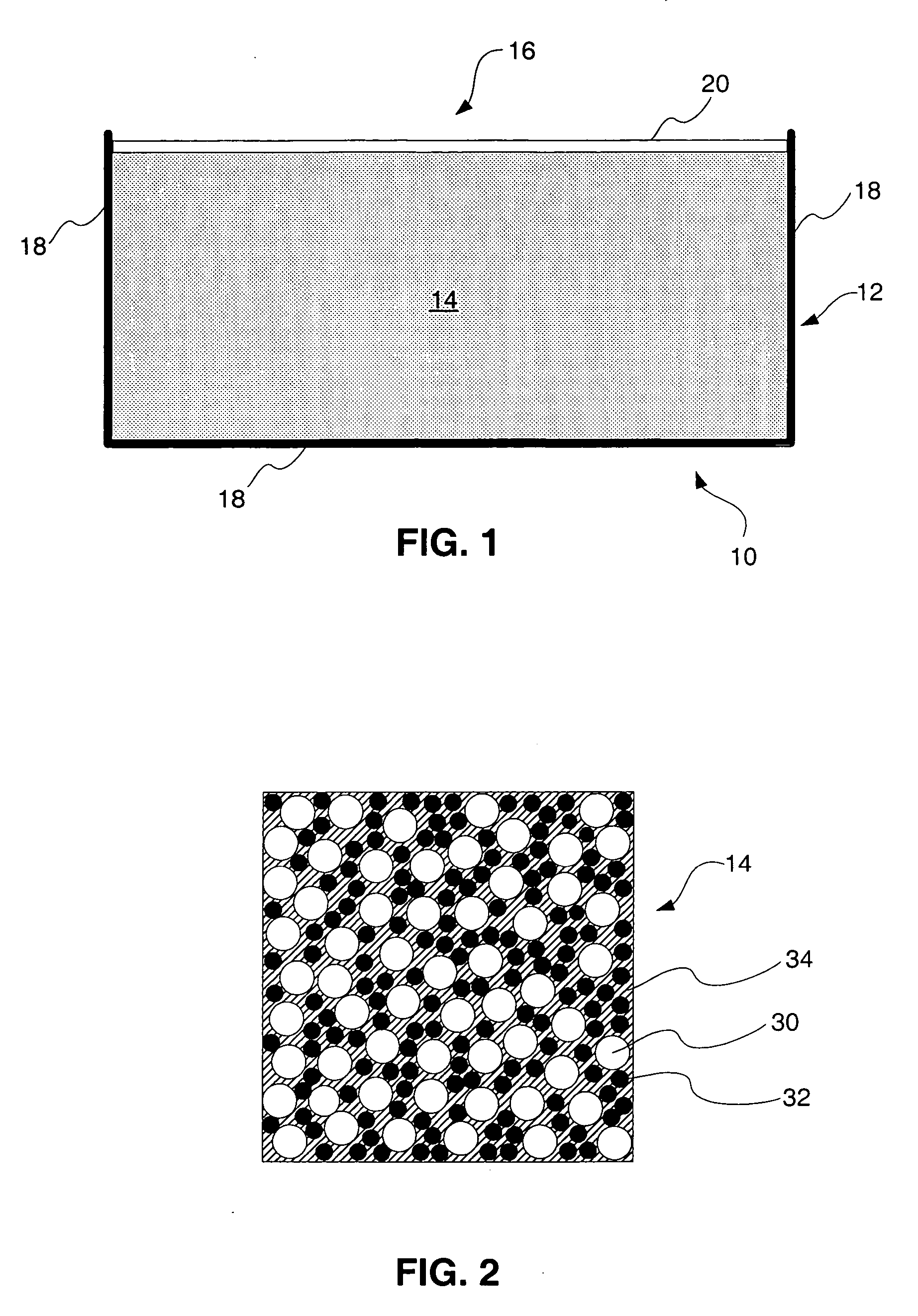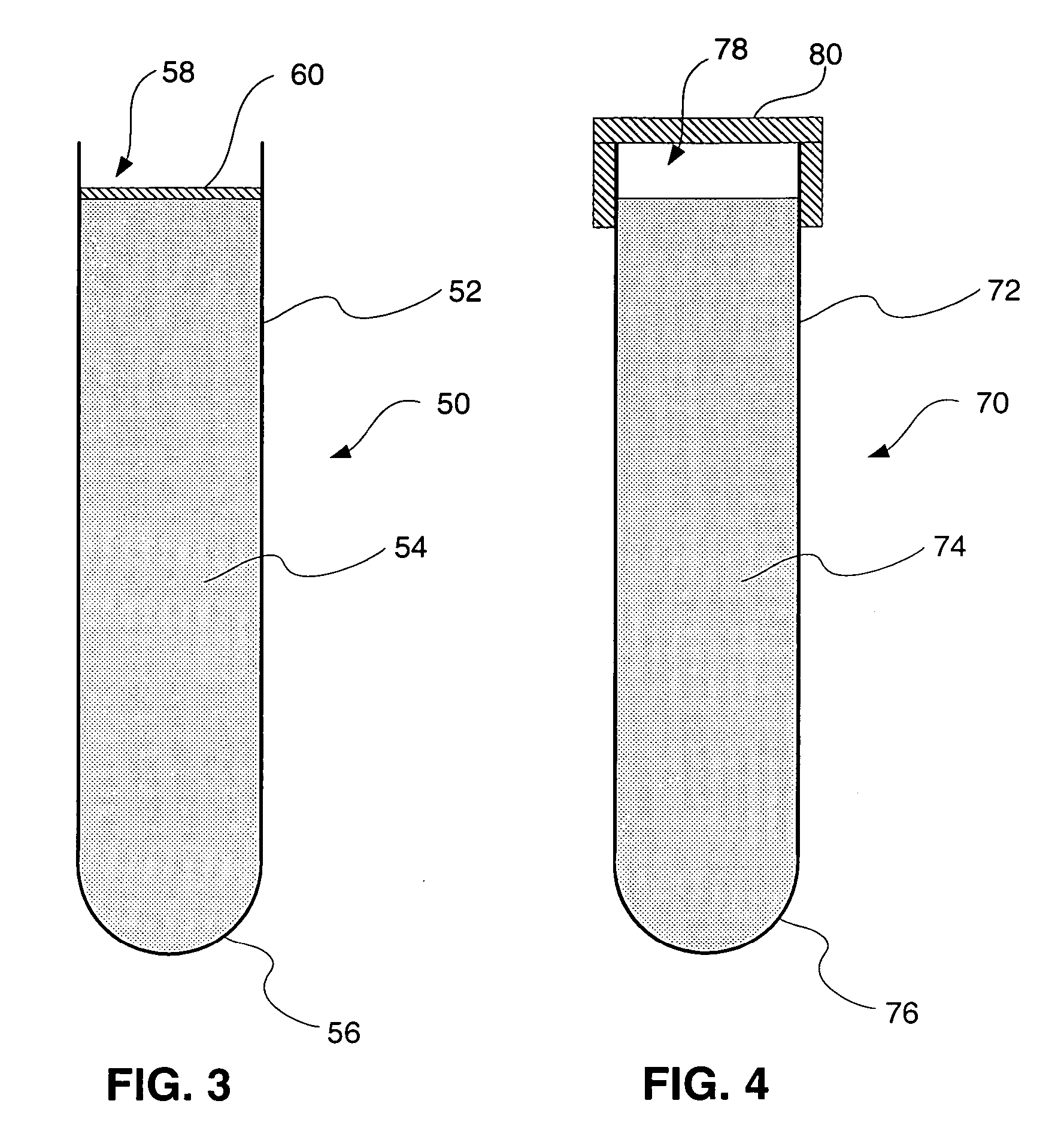Nuclear powered quantum dot light source
- Summary
- Abstract
- Description
- Claims
- Application Information
AI Technical Summary
Benefits of technology
Problems solved by technology
Method used
Image
Examples
Embodiment Construction
[0017] Turning first to FIG. 1, there is shown a side view of an exemplary nuclear powered quantum dot light source 10. The exemplary nuclear powered quantum dot light source 10 preferably has a container 12 in which is located a quantum dot and radionuclide containing matrix 14. The container 12 can be formed in a desired size and shape, e.g., disk shaped, box shaped, etc., and of a desired material, such as metal, plastic, glass, etc. The container 12 has at least one side 16 which is open or light transmissive, with other sides 18 being opaque if desired. The sides 18 could be made to be reflective (e.g. mirrored) so that the light generated by the energized quantum dots is more efficiently reflected out of the container. A layer of material 20 not containing radioisotopes or quantum dots can optionally be provided over the at least one side 16. The layer of material 20 is made of clear or light transmissive material, such as a UV curable resin and can be provided to help ensure ...
PUM
 Login to View More
Login to View More Abstract
Description
Claims
Application Information
 Login to View More
Login to View More - R&D
- Intellectual Property
- Life Sciences
- Materials
- Tech Scout
- Unparalleled Data Quality
- Higher Quality Content
- 60% Fewer Hallucinations
Browse by: Latest US Patents, China's latest patents, Technical Efficacy Thesaurus, Application Domain, Technology Topic, Popular Technical Reports.
© 2025 PatSnap. All rights reserved.Legal|Privacy policy|Modern Slavery Act Transparency Statement|Sitemap|About US| Contact US: help@patsnap.com



